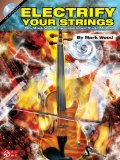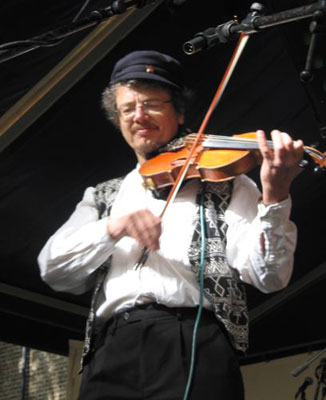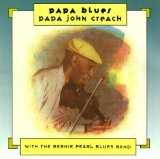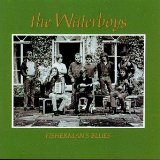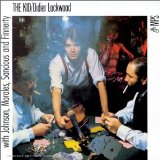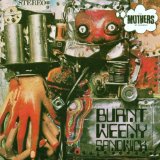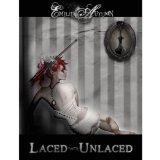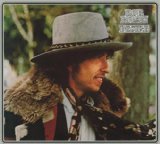
MENU TO FIDDLE STYLES:
SEE MY MUSICGURUS VIDEO COURSE ON ROCK VIOLIN:
VISIT THE FIDDLE CHANNEL FOR FREE FIDDLE LESSONS, TUTORIALS, AND WORKSHOPS!
Rock Violin
Few if any musicians start out their violin playing career intending to play in a band. Most likely the aspiring fiddler will start with violin lessons at school, then at some point in their teens realise that rock music is way more cool than classical, and will take up the guitar, bass, keyboards or whatever, and, to the despair of their long-suffering music teacher, will quit the scales, arpeggios and grade exams. Once ensconced in a band they may eventually drag out the fiddle at a rehearsal one day, and be surprised to discover that it actually sounds pretty good on one or two numbers, or at least would if you could find some way to amplify the damn thing. So it is that the majority of violinists who play in rock or pop bands are multi instrumentalists, with the fiddle as their second or third instrument.
Jim Lea of Slade was the bass player, but his scratchy solo on Coz I Love You didn’t stop it going to no 1 in the British charts in 1971. Billy Currie of Ultravox- a veteran of the Huddersfield Youth Orchestras (hey, so am I!), was mostly a keyboard player, but his plaintive gypsy style playing added that essential something to their huge hit Vienna in 1981. Steve Simpson and Charlie Hart were both multi instrumentalists, and played bits of fiddle and mandolin to add that quirky English folksy sound to many of Ronny Laine’s hits back in the 70’s . There’s no doubt that in bands it’s often a big advantage for a fiddle player to double on something else. Ray Schulman of Gentle Giant doubled on violin, recorder, trumpet, guitars as well as his main instrument, the bass. Rick Grech was primarily a bass player, but also played fiddle in most of the bands he worked with, including Family, Blind Faith and Traffic. Often the violin will work on one or two numbers in a set, or maybe on one or two sections in most of the songs but, unless it is an integral part of the band sound, it’s definitely a good idea to have at least one other instrument up your sleeve, or you may quickly find yourself bored, frustrated and redundant. Nobody says of the drummer “yeah, he’s good, but he’s playing all the time…” As a violinist that’s something you’re all too likely to hear.
Eddie Jobson carved out one of the most impressive careers in progressive rock, playing with Curved Air, Roxy Music, Frank Zappa, UK and Jethro Tull. In all these bands he was best known for his violin playing, but he was also a superb keyboard player, greatly increasing his employability. Also a keyboard player/violinist with an impressive cv is Simon House. He started off with Third Ear Band, moving on briefly to Barclay James Harvest, and then space-rockers Hawkwind, with whom he recorded 3 albums between 1974 and 77. He then worked with David Bowie, appearing on the hit single Boys Keep Swinging in 1980, and toured with Mike Oldfield on the 10-year anniversary tour of Tubular Bells. Another multi instrumentalist was the pioneering viola player John Cale of the Velvet Underground. His extended drones, and occasional shrieks and wails (listen to Heroin next time you’re feeling excessively cheerful) show that he was no virtuoso, but for a completely different side of his playing check out Fly, which he recorded with Nick Drake in 1970 on Bryter Layter
- described as “one of the most beautiful and melancholy albums ever recorded.".
Rick Grech
Sometimes the violinist is a hired hand and a specialist- someone who has already made a name in a particular style of fiddle playing outside of rock, and who has been brought in to augment the sound of a particular single, album or tour. There are a number of major rock artists who often hire fiddlers on this basis. Canadian singer guitarist Neil Young brought in Cajun fiddler Rufus Thibodeaux for five of his albums in the 70’s and 80’s. including Comes a Time, Hawks and Doves, and Old Ways. Already a veteran Nashville session head, Thibodeaux added a great deal to songs like Southern Pacific and Bound for Glory. Van Morrison, who also periodically dallies with country music, has hired numerous fiddle players over the years. English fiddle player Bob Loveday got the call in 2001 to play on the Down the Road
album. He had already clocked up an impressive cv with names such as Paul McCartney, Jeff Beck, Bob Geldof and the Penguin Café Orchestra. Bluegrass master fiddler Byron Berline got to play with the Rolling Stones on Country Honk in 1969. This was a country version of the better known hit Honky Tonk Woman, and appeared on the Let It Bleed
album. Byron got the job on the recommendation of Gram Parsons, with whom he had already been working. Blues player Papa John Creach came to fame in the 70's with psychedelic rock bands Jefferson Airplane, Jefferson Starship and Hot Tuna, before launching a solo career. Folk players occasionally get the chance to strut their stuff on the big stage. 80’s megastar Mark Knopfler took fellow Glaswegian John McCusker on tour for 6 months in 2009.
We’ve said the fiddle is sometimes central to a band’s sound. Such was the case with The Waterboys, a showcase for the talents of fiddler Steve Wickham, perhaps best known for his solo on Fisherman's Blues
. Wickham’s very first recording session, even before joining the Waterboys, was with megastars U2; he had met guitarist The Edge at a Dublin bus stop, and asked him if he wanted a bit of fiddle on the album they were recording. The answer, surprisingly, was yes, and , whilst not prominent, the few bars of fiddle on Sunday Bloody Sunday did a great deal to open doors for the young Wickham.
Also in the vaguely folk-rock area are post-punk crusty-rock band The Levellers. They are a band with a message, standing up for the rights of the common people; the fiddle of Jon Sevink adds an essential earthiness to their sound.
One of my favourite bands from the 70’s was Caravan, stalwarts of the whimsical Canterbury progressive rock scene . They brought in viola player Geoff Richardson in 1973 whose mellow and rambling solos became an integral part of the band’s sound. OK, viola isn’t strictly speaking a violin, any more than a Welshman is English, but viola players are well used to such jokes, slurs and insults. Richardson went on to play with such bands as the Penguin Café Orchestra and the Bob Geldof Band. Another product of the Canterbury scene was Soft Machine- a jazz/rock/fusion band which included violinist Ric Sanders, who later guested on many rock albums with bands including The Mission and All about Eve. In 1987 he played on Jethro Tull’s Crest of a Knave
album; more rocky than many of the band’s previous albums it caused an upset by winning Grammy for best Hard Rock/Metal Performance, and causing band leader Ian Anderson to claim defensively “Well, we do sometimes play our mandolins very loudly!”. Speaking of Tull, the one- legged country squire of stadium prog folk, Ian Anderson, added a few bars of fiddle himself to their mischievous masterpiece Thick As a Brick
.
Darryl Way
Curved Air was another 70’s prog rock band, in which semi-classical lines from violinist Darryl Way and later Eddie Jobson were at the core of the band sound. Vivaldi was one of the band’s best known tracks. I saw them live at a gig at Leicester Polytechnic, and the violinist set light to his bow, and hurled it across the stage into a straw archery target. Archery aside, Vivaldi has long been a particular source of inspiration for rock violinists. The solo violin work on the Four Seasons and his violin concertos are full of rhythmic drive and dynamic string-crossing patterns which transfer with ease to a rock backbeat. Mark Wood’s Vivaldi Rocks, or Bow Link in Em from Slovenian band Naio Ssaion are just two examples.
VIOLIN IN POP MUSIC
In the field of commercial pop the fiddle has always been seen as a bit of a novelty. 1970’s band Cockney Rebel is usually remembered as singer Steve Harley’s band, but his co-founder member was violinist John Crocker, who put the fiddle parts on singles including Sebastian, Mr Soft, Judy Teen and their biggest hit, Make me Smile. The original Cockney Rebel was short lived, but in subsequent reincarnations of the band, Crocker’s place on the fiddle has been taken first by Barry Wickens and most recently by Nick Pynn. Among Nick’s other rock adventures has been a long term association with “The Crazy World of Arthur Brown” (remember “I am the God of Hellfire”- my all time favourite Top of the Pops moment?). He also had the bizarre experience of touring with Dublin girl band B*Witched; every night his party piece was to be hoisted high above the stage in a metal cage to fight a musical duel with the band’s guitarist, similarly suspended on the other side of the stage. The things we do for our art. Another fiddler to make a brief appearance with B•Witched was Clark Gable-lookalike Bobby Valentino. Bobby was a mainstay of London’s country rock pub scene in the 1980’s, playing with The Electric Bluebirds, Hank Wangford and Los Pistoleros. He also appeared with The Men They Couldn’t Hang and, perhaps most notably on Young at Heart with Scottish band The Bluebells. His sliding double stop intro and bridge to this song were so distinctive that he felt justified in suing the band- successfully- for a share of the royalties. Ever the showman, he clinched the deal in court by playing his fiddle part live for the High Court judge, netting a cool £100,000 in the process. A good day’s work, I’d say.
Bobby Valentino
Also at the pop end of the market in the early 80’s was Dexy’s Midnight Runners. With a raggle-taggle string section including up to three fiddle players (Helen O’Hara, Steve Brennan and Roger McDuff), Dexy’s had a memorable hit with Come on Eileen. Other pop/rock manifestations of the violin include Russell Senior’s work with Britpop band Pulp, and Stuart Gordon’s contribution to The Korgis, including their hit single Everybody’s got to learn sometime in 1980. Grammy award-winning US/Israeli artist Miri Ben-Ari has carved out an unlikely career as “The Hip Hop Violinist”, appearing everywhere from Sesame Street to Madison Square Gardens. Her single “Symphony of Brotherhood” is well worth a listen.
VIOLIN IN PROGRESSIVE ROCK
Violin was often more at home at the progressive end of the pop/rock spectrum. King Crimson, ruled with a rod of iron by guitarist and general musical guru Robert Fripp, were most definitely at the serious end of progressive rock. While other bands were living it up and throwing televisions out of hotel windows, Fripp probably had his band of Merrie Men doing midnight rehearsals, studying Nietzche, and analysing Schoenberg. After a spate of resignations they were joined in 1972 by violinist David Cross. Cross’s solo on Lark’s Tongues in Aspic part 2 would nowadays have been banned under Health and Safety, Human Rights and Anti-Terror legislation. Even back in the 1970’s, this searing, rasping, nerve-shredding solo certainly wouldn’t have gone down well at a dinner dance. Also at the dilated-pupil end of the rock spectrum was Magma, a French band formed in 1969 by the drummer Christian Vander. Inspired by Stravinsky and Wagner, this operatic symphonic progressive jazz-rock band (I’m sure you’re familiar with the genre) sang entirely in Kobaian, a language from far away and deep in the future. Kobaia is of course the planet to which mankind will escape when life on Earth becomes intolerable. The music is actually surprisingly accessible, especially on the 1975 live album which featured the French jazz-rock violin wizard Didier Lockwood. Another French/Alien collaboration is Planet Gong, a psychedelic fusion band often featuring Graham Clark on violin.
Didier Lockwood
Another classic prog rock band was Van Der Graaf Generator. The lead lines were originally covered by sax, but in 1976 they were joined by violinist Graham Smith, formerly of String Driven Thing, who described the violin, somewhat wistfully, as “a sort of Cinderella of rock music” You’ll perhaps forgive me if most of the roll call so far has been somewhat anglo-centric. The early 70’s was also a great time for rock fiddle in the US,. Chicago-born violinist Jerry Goodman was one of several jazz/rock/fusion violinists around in the early 70’s. He joined The Flock for their 1970 album Dinosaur Swamps
playing fast, fluent and adventurous solos on songs such as Clown. He was poached from this band by John McLaughlin when he formed his all-star Mahavishnu Orchestra. His first choice had apparently been Jean Luc Ponty, who was unable to get a working visa in time. (Tough luc!) Though short-lived, this band was a perfect showcase for Goodman. The 10 minute Dance for Maya, for example, opens with an extended bluesy pizzicato solo, featuring later on an extended violin solo using wah-wah. He remains on top form today, as shown by his work with the Dixie Dregs, for example on the track Take it off the Top.
Ponty finally got his chance with the Mahavishnus in 74 with the albums Apocalypse
and Visions of the Emerald Beyond
. McLaughlin went on to form Shakti in 1975, calling on the Indian violinist L Shankar. Trained in the Indian classical tradition, L Shankar has a command of his instrument second to none. His astounding technique was too much for a mere four strings, and , along with guitar maker Ken Parker, he developed a double necked, 10-string monster violin which covers the full range of the string family down to the double bass. His first solo album Touch Me There
was produced by Frank Zappa in 1979. Zappa had a good track record of using violinists. The raw and bluesey playing of Don Sugarcane Harris featured on Weasels Ripped My Flesh
, Burnt Weeny Sandwich
and Hot Rats
, while the much more jazzy Jean Luc Ponty he did King Kong: Jean Luc Ponty Plays The Music Of Frank Zappa
and Electric Connection
.
L Shankar
THE VIOLIN IN METAL
Death metal, Black metal, power metal and Goth Metal are unpromising territory in which to find violins. It’s a land populated by trolls, orcs, dragons, warriors and Nordic Gods. Death growl vocals, blast beat drums, and heavily distorted guitars are all de rigeur. Band names like Slayer, Hellhammer, Venom, Anvil of Doom, Extreme Noise Terror, Possessed, Morbid Angel, Bleeding Oath, Carcass, all suggest that this was not what your parents had in mind when they presented you with your first ¾ size violin. Nevertheless some violinists obviously were led astray en route to the school orchestra rehearsal, and ended up cowering in a filthy, darkened, smoke-filled rehearsal studio, being menaced by guitar-wielding ghouls.
Scandinavia has become one of the strongholds of metal; In Norway Pete Johansen has cornered the market, providing fiddle for bands including Morgul, Tristania, Sirenia, and Sins of thy Beloved. Finland has Korpiklaani and Turisas, both featuring violin; the latter, a “battle metal” band dress like marauding vikings in leather, fur and metal barbarian garb , topped off with black and red war paint. Other European metal bands including violin in the line-up include Black Messiah from Germany, Magog from Sweden, Dornenriech from Austria, and Dominia from Russia. Eluveitie from Switzerland are a folk metal band who use the ancient and (otherwise extinct) Gaulish language and play a wide array of folk instruments alongside the typical distorted guitars and blast-beat drums of metal. The fiddler is Meri Tadic; her playing style is fairly straightforwardly celtic. The Italian band Elvenking are similar in overall sound and approach, though the violin is the only folk instrument. From Germany comes Winterdome, a fantasy folk-metal band including fiddler Lisa Hinnersman, while Polish band At the Lake is ably led by violinist Milena. Some of the finest metal violinists are in the US. One remarkable player is the Californian Emilie Autumn. A prodigious violinist since early childhood, she has developed a solo career based on what she calls “Victoriandustrial” or “psychotic vaudeville burlesque” music. Perhaps the best showcase for her work is the double album Laced/Unlaced
; one disc covers her interpretation of classical pieces, the other original electric violin compositions. The track Unlaced was an ideal choice for the soundtrack of the blockbusting horror franchise Saw V in 2008.
Emily Autumn
Another top flight American classical violinist to venture into heavy rock is Rachel Barton Pine; she has established a high profile international career. Her interests extend well beyond classical music, to include folk, jazz and rock. In 1997 she released a string quartet album including many rock covers of numbers by bands such as AC/DC, Led Zeppelin, Black Sabbath and Metallica. Another outstanding young American violinist is Lyris Hung, leader of the New York progressive/death metal band Hung. She is perhaps the best violinist I have come across in terms of working with a guitarist on equal terms. If Lyris Hung matches the guitar with her band, Anton Patzner goes a step further in his instrumental band Judgement Day. Along with his brother, cellist Lewis, they have replaced guitars entirely, managing to produce hard core progressive metal with just themselves and a drummer. You may think such a combination would be a half-baked effort, appealing to a sorry selection of wimps and posers. Not a bit of it. They create an awesome, towering city of sound, often comparable in texture and power to Led Zeppelin’s Kashmir.
If you don't enjoy this video by Judgement Day, I'll gladly eat my rosin.
The Rock Violin Solo
The American folk and country rock scene of the 70’s was also fertile ground for the fiddler. When Bob Dylan went electric for the infamous “Judas!” tour of 1966 he recruited The Band, including multi-instrumentalist Rick Danko, whose down-home fiddle can be heard on tracks such as Rag Mama Rag. Dylan also recruited the fiery Irish/Sicilian born Scarlet Rivera for his 1975 Rolling Thunder Revue tour. She features heavily on the Desire
album, playing wild blues and gypsy-influenced violin. The best way to guarantee you get a good featured solo is to form your own band, as did David LaFlamme from Connecticut. He already had a taste for the spotlight as classical soloist with the Utah Symphony Orchestra, but was soon working with the likes of Janis Joplin, Jerry Garcia, and an early version of Dan Hicks and his Hot Licks. During the Summer of Love in 1967 he formed It’s a Beautiful Day, and had a hit with the melancholy single White Bird. This opens with some pizzicato and features two extended violin solos- mostly in the myxolidian mode- always a good bet to add a slightly dreamy and folky dimension to a solo. A strong contender for the best ever genuine rock violin solo has to be from the Canadian Ben Mink on the 1982 song “Losing it” by Rush. On this track, which kicks off at a brisk pace on 5/8 time, Mink is in from the start, playing mellow electric violin with heaps of delay which gives a sparkle to simple rippling scales. Rhythmic chops and tremelo passages punctuate the singing, before he launches into the Big Solo. He doesn’t break sweat over the 11/8 time signature, soaring and gliding effortlessly into the highest registers, maintaining perfect intonation throughout. For many years since he has worked with singer KD Lang. Another Canadian rock violinist is Owen Pallett,. With a whole string of bands in Montreal, and most recently with his own “Final Fantasy”, Owen has pioneered the very effective use of looping pedals. He will start a number off on his own, playing a couple of bars of percussive pizzicato, which is “sampled” by his pedal and immediately played back. He will then superimpose several more lines of pizz and then arco, until he has a full backing track which he can then sing over. The effect is very full, as percussive and lush as you like, and when done live and with no safety net is, as his fans would no doubt state, “Totally Cool”.
Another pioneer and master of the looping pedal is British violinist Ed Alleyne- Johnson. He has been a busker on the streets of northern England for over 30 years, but is best known for his work in the late 80’s and 90’s with New Model Army. Their top 40 single Vagabonds opens with an unaccompanied multilayered violin sequence, and also features Johnson on a strong hookline and a closing solo. When touring with the band he would open the show with solo violin, laying down layers of pizzicato, rhythmic and chordal loops before finally putting in a top line. The content was largely improvised, but with a strong classical influence to much of it. He has had considerable success with solo recordings such as the Purple Electric Violin Concerto
. He uses a self-made 5-string electric violin with a zeta pickup, along with an impressive array of effects pedals.
Finally, you can't talk about rock violin without mentioning Mark Wood, who takes the whole rock persona vibe very seriously. If you want rock guitar hero in violinist form, he is it! With the symphonic-rock group Trans Siberian Orchestra, with six solo albums, and with artists like Celine Dion, Lenny Kravitz and Billy Joel, he gives violin some real rock credibility. He also builds and markets electric violins, notably the v-shaped Viper series some of which, mystifyingly, are fretted! I have to admit that I was sceptical about the idea of frets on the violin, until Mark demontrated his Viper to me, and showed how glissandos and vibrato were quite unaffected by the frets. He explained:
You think about the evolution of instruments over the last 500 years; the harpsichord going to the piano, and the development of guitar technology... But on the violin the string technology has not changed in 400 years. I don’t believe that an instrument shoud be hard to play to be relevant musically. I think that we should simplify the instrument as much as possible so that the focus is not on the challenge of the instrument, but on the music. End of story. That’s what we do, we’re musicians. If my instrument makes it easier for me to make music, then I’m winning. Music drives everything for me. The frets don’t interfere with the beauty of the violin. If it did, and you couldn’t hear that beautiful sliding stuff, I would never have frets. And chris, I’m telling you man, I had no idea if it would work! I put them on there and I thought, if this hurts my vibrato and sliding. It’s not going to work. All of a sudden, it works!
Mark Wood
How to Play Rock Violin
There are two things you need to know to start with about playing rock violin. The first is that no one else in the band is going to tell you what to play. There will probably be a chord sequence to follow, and possibly some melody lines, but in general it’s going to be up to you to come up with your parts, so improvisational and to some extent compositional skills will be important. If you’re straight out of classical music school and have never improvised before, you’re going to find it hard going! The second thing to remember is that there is no rule book for rock violin. Unlike bluegrass, where the standard of style and practice were laid down by Bill Monroe’s band in the 1940’s, or Irish traditional music which was honed over centuries and cemented into place with the first Irish-American recordings in the 1920’s, there is no clear-cut role model for playing violin in a rock band. Jean-Luc Ponty came at it from a background of bebop playing; Sugarcane Harris and Papa John Creach came at it from the blues; L Shankar came from an Indian classical tradition, Eddie Jobson from classical playing. Each approached it their own way, and though they were all influential, none became sufficiently famous to lay down in the general musical consciousness that “this is how rock violin should sound”. This is good news for you, because it means that no one is going to be telling you that you’re not doing it right!
Rhythm Violin
Getting down to the detail of what you’re actually going to play, there are three roles you can take within a song; rhythm, melody, and solos. Rhythm Violin This is the most unglamorous part of rock violin playing, but if you’re going to avoid having to stand around doing not very much for most of each song, it’s a valuable skill to learn. You need to learn the chord sequence, and find a series of different double stops for each chord. This is an area where fiddlers with a background in country music have a big advantage. Bobby Valentino (with the Fabulous Poodles, The Bluebells, The Tex Pistols) is an excellent rhythm player, using a variety of chopping, sawing and shuffling patterns. One of my favourite bow patterns, which will work on most rock rhythms, is played with bouncing bows down at the heel; Down Up Up, Down Up Up, Down Up/ Down Up Up, Down Up Up, Down Up. The accent lies on the down bows, and it gives an effective and percussive cross rhythm to a straight 4/4 drum pattern. This idea will work either with double stops, or moving up and down arpeggios. Listen to Simon House on David Bowie’s single Fashion, or Steve Wickham on the Waterboys’ We will not be lovers for good examples of rhythm violin playing.
Melodic Violin
If you’ve ever worked in a duo with a singer/guitarist, you’ll probably be familiar with the idea of playing long notes during the singing, and short bursts of melody in the gaps between vocal lines. The “safe notes” to play are the root, third and fifth of each chord, but that can end up sounding simplistic. Often there will be an “internal melody” implied by the chords. A simple example would be G to G7 to C. You could play G (the root of G); F natural (the seventh in G7) then E (the 3rd of C). Much more interesting than playing the roots. A very valuable technique is to get familiar with the “scale in 6ths”; this is a scale played in harmony. The upper note is the melody note, while the lower is a sixth below it. In a three-chord song (1/1V/V), you can use this scale all the way through. Instead of “jumping” from one chord to the next, you can climb up and down the scale with your nice fat harmonies. Some players get away successfully with playing melody all the way through a song. Scarlet Riviera did this on Bob Dylan’s Desire album- she “blew” virtually the whole way through the album, hardly stopping for breath. Sometimes a short piece of melody can act as a hook, or an intro to a song. Bobby Valentino hit gold with his sawing double stop intro to the Bluebells’ Young at Heart.
The Pentatonic Scale
For a beginner, deciding what notes to play on a solo is perhaps the biggest challenge. How to choose? You can make this much easier by using a pentatonic scale, with just five notes. In the major key this means leaving out the 4th and 7th. It gives a light, airy feel, and provides a structure of framework which, even if you're randomly noodling, will sound structured and "thought out".
In this shorty video I demonstrate the major pentatonic scale, and show how you can use it in a series of different octaves or positions from the bottom to the top of the violin neck.
The Solo
Inside every rock violinist there’s a frustrated lead guitarist. And what every guitarist wants is a really epic, heroic solo where the eyes of the whole stadium are locked on your fingers, every ear lapping up each golden note, every other member of the band secretly seething with jealousy. The extended rock violin solo is a rarity, but not as rare as you might think. For a pop single you’ll be lucky to get more than one verse or chorus for a solo. Dick Powell’s solo on Rod Stewart’s You Wear it Well. Dave Arbus got a 40 second solo on The Who’s 1972 single Baba O’Reilly. Not bad for a 5 minute single, but dwarfed by Sugarcane Harris’ 7 minute solo (split into two parts) on Frank Zappa’s 1969 The Little House I used to Live in from the Burnt Weeny Sandwich
album.
The key to successful rock violin soloing is mastery of the blues scales. I differentiate between two types of scale- the major blues scale (eg G A Bb, B, D E G); and the minor bues scale (eg G Bb C Db D F G). The first is based on a major pentatonic scale, with the additional of an optional flattened third. The second is a minor pentatonic scale, with an optional flattened fifth. In each case the optional note can be slid or bent, and there is a flexible, grey area between it and its "natural" neighbour.
In this short video I demonstrate these scales.
The violin imitating electric guitar
There are certain specific techniques and phrases the violin can use to imitate the lead guitar. One of the most common is the “Double string” lick; play an open E string simultaneously with an E on the A string (best done with 2nd finger in 3rd position). By starting the note on the A string slightly lower, and sliding it up, you get a nice dissonance, a fat, dirty sound a world away from the clean classical note you’re trying to escape from. You can hear this to good effect on the Waterboys single The Fisherman’s Blues, and Jean-Luc Ponty used it extensively. Rock guitarists love what they call the Power Chord; it has just a root and fifth, so sidestepping the tiresome problem of deciding whether the chord is supposed to be major or minor. It’s easy on the guitar, and even easier on the violin; play short, simple riffs on a lower string, and let your fingers carry over onto the next string up, giving you parallel 5ths.
Artificial Feedback or "ghost harmonics"
Controlled feedback is an essential tool of the rock guitarist. Using a pickup and amp, you’ll find it very hard to get the same effect on a violin using actual feedback. There is however a simple way of achieving the same sound without any actual feedback. Classical players might call it sul ponticello; playing with your bow close up to the bridge. It creates whistling overtones very similar to feedback, and again it’s a dirty sound very suitable for rock. I find it easier to get the effect by simply applying less downward pressure to the bow. When you’ve mastered this effect, you should be able to get a variety of different overtones from a single note, rising and falling as you increase or decrease the pressure. The technique works very effectively in combination with trills and fast-moving minor blues licks, about which more shortly.
Here's a short video to demonstrate artificial feedback on the violin
Metal guitarists also love “sweep picking”; rapid up and down arpeggios, possibly first used in quite another context by Django Reinhardt, and perfected in a rock context by Yngwie Malmsteen. These can be imitated by playing 4-string up-and down semiquaver patterns, preferably with spiccato bowing. Rock violin hero Mark Wood has mastered this technique. Not all rock violin techniques imitate the guitar. On the D string, slide up to a 1st finger E note, and trill it with a 3rd finger G natural. This is the “Harmonica lick”. With its bluesey sound it makes a great effect in a solo; Sugarcane Harris stretched it out interminably and repeatedly on his mammoth Little House solo, and it sounded great. Certain modes and scales are very helpful in creating a successful rock violin solo. The major pentatonic scale is great for airy, optimistic sounding phrases. David Cross, on Trio from Starless And Bible Black
improvises almost entirely o this scale. The minor pentatonic (played over a major scale) has a much darker and more bluesey sound. Listening to Scarlet Riviera on Desire, you’d think this was the only scale she knew. The myxolidian mode (with a flattened 7th) has strong Indian/mystical overtones, and is therefore much beloved by certain hippy trippy 70’s bands. Graham Clarke described it to me as a typical Gong scale. The Baba O’Reilly solo arose because the song is about the Indian mystic Meher Baba; Arbus used the myxolidian through most of the solo.
Sound and Amplification for rock violinists
To play live in a rock situation you will need amplification, and don’t expect to be able to get away with using a vocal mic. Your best bet is to use a good transducer pickup such as Barcus Berry or Fishman; I’ve used both of these but now wouldn’t be without my Baggs bridge pickup. These will give you a strong, clean signal and, through an amp or PA, should give you a reasonably good violin sound. Of course, a clean sound isn’t always what you actually want. In the 60’s and early 70’s, the crude early pickups that were available were scratchy, rasping and often distorted, but that’s not necessarily a bad thing. David Cross’s solo on King Crimson’s Lark’s Tongues in Aspic 2, or Jim Lea’s solo on Slade’s Cos I luv you” have a tone like sandpaper on a blackboard, but are all the better for it. The alternative to a pickup on an acoustic violin, is to get an electric; today the leading brands are probably Zeta ( at the top of the market) and Yamaha. Effects pedals first appeared in the early 70’s, and among the first violinists to experiment with them was Jean-luc Ponty. He eventually settled on the phaser as his default effect, a wonderfully rich sound, copied to perfection by Eddie Jobson on tracks such as Time To Kill from UK’s debut album. Wah wah can also be used effectively; listen to Kid
from Didier Lockwood’s album of the same name. Delay or echo is always useful, particularly on high, sweeping solos. One of the best examples has to be from Ben Mink’ s solo on Rush’s 1982 Losing It. Loop effects are very useful if you’re playing solo; they allow you to build up layers of sound, perhaps starting with pizzicato, then adding rhythmic and chordal textures before finally playing a solo over the top. Ed Alleyne-Johnson, best known for his work with New Model Army, can be seen busking live using loops and many other effects. The loop is also used by Owen Pallet of Final Fantasy and Colm Mac Con lomaire of Irish band The Frames. As technology has advanced, it has become possible to get ever nearer to the sound of a distorted rock guitar; Anton Patzner of Judgement Day, Lyris Hung of Hung and Mark Wood are all true masters of the rock violin sound.
If you want to choose a book to help you learn to play rock violin, you'll find the list a short one. In fact, there's just the one, but it's a good one! Mark Wood's Electrify Your Strings BK/CD Violin Instruction (Book & CD)
is written with authority and messianic fevour. This is a man who wants to spread the message that VIOLINS CAN ROCK! Essential to his teaching method is the concept of using the violin neck like a guitar fretboard- learning finger shapes or patterns which can be moved into any position, allowing you to play easily on any chord or in any key. He covers most of the essential techniques for rock violin; minor pentatonic scales, blues scales, rhythm playing, slides, sul ponticello, triplet patterns, sweep bowing, vibrato, exotic modes and scales. He has special sections on 5,6 and 7 string violins, and advice on electric violins, effects and amplification.
The CD which comes with the book is excellent, with solid rock backing tracks and an inspiring example from Wood with the sound, content and attitude of his playing.
Return to fiddlingaround.co.uk homepage
Chris Haigh is a London-based fiddle player, session musician and writer. He has played on over 100 albums, and worked with artists including All About Eve, Morcheeba, Alison Moyet, David Soul, Michael Ball and The Quireboys. His new book Discovering Rock Violin (Schott Pop Styles Series)
" was published in 2012
.jpg)
Plugging In: Extended Techniques For the 21st Century Violinist

The last decade in the US has seen a renaissance of what is being called Alternative Strings- a broadening and diversification of the role that the violin in particular can play in rock, jazz, funk and even hip hop. One of the most exciting and innovative players in this movement is New Yorker Joe Deninzon, and his new book Plugging In looks at many of the techniques that can be applied in these fields.
As its title suggests, the book will be of most value to players with electric violins, talking at length about choice of instrument, amplification and the use of effects. The basics of rock improvisation are covered with sections on pentatonic, blues, bebop and modal scales. One of Joe Deninzon’s particular areas of expertise is in funky chopping rhythm violin, which he dubs “rhytholin”, and the video footage on the accompanying DVD is particularly valuable in demonstrating this. He breaks new ground with the extensive and detailed section on the use of effects pedals, of which he is a master. He looks not only at the vast array of available sound combinations, and how they are created, but he also gives examples of specific playing techniques to make the most of these sounds. My particular favourite is the pitch-shifting/whammy effect, for which he gives a long series of startling arpeggios and runs.
On both the CD and DVD, the musical examples are inspirational. The closing track, Road Rage, from Deninzon’s new Stratospheerius album has a breathtaking solo as exciting as any that I have heard. He’s not kidding when he warns you to fasten your seatbelt. This book is a must for anyone serious about getting the most out of an electrified violin, and it opens up an ever-expanding world of musical possibilities for the modern string player. “Just because there is no precedent in a certain genre of music on your instrument does not mean you can’t be a trailblazer in that genre and set the precedent yourself”
Papa Blues
; Papa John Creach
Over the years Papa John Creach has played psychedelic rock, jazz and pop music, the blues was always the core of his playing, and this is what is featured on this album. Recorded in 1992 (two years before his death), with the Bernie Pearl Blues Band, it also features Creach’s gritty vocals on most numbers. Most of the songs are some form of boogie, such as the 6/8 Big Leg Baby and Tired of Crying, or the 12/8 Bumblebee Blues. There is also soul ( the one-chord Train to Memphis) and funk (Why don’t you let me be), and a few slow ballads.
The title track, Papa Blues is one of my favourites, opening with a rubato fiddle section, and featuring the wide, slightly shaky vibrato so characteristic of his playing. He also uses some tremelo bowing- another common motif. He typically uses minor pentatonic and blues scales over major keys, and Girl you must be crazy closes with a pizzicato solo. Altogether an intimate and engaging album.
Fisherman's Blues
The Waterboys
Celtic tinged rock fiddling from Steve Wickham throughout this 1988 album, especially on tracks like Fisherman's Blues (the hit single), where he uses the "double E lick" , plus lots of rolls and triplets. We will not be Lovers uses repeated double stop rhythmic chops which lock in very nicely with the drum rhythm. Was he making reference to the typical Edge guitar rhythm of U2? The track closes with another use of the double E lick. Also worth a listen is the Van Morrison song Sweet Thing- a long and rambling track where the fiddle alternates phrases with the mandolin.
Kid
Didier Lockwood
Didier Lockwood's 1983 album The Kid is jazz-rock at its best. It's light, bright, optimistic music in the Weather Report vein, full of memorable riffs and melodies, and featuring dazzling soloing from Lockwood. He is backed by a terrific 5-piece band including David Sancious on keyboards. Lockwood uses both acoustic and electric violins (a Violectra), and makes excellent use of effects. Sleight of Hands has a heavily distorted, snarling solo which is a homage to Hendrix; this is full-on violin shredding par excellence. The Kid has a very funky and bluesey solo using wah-wah, while A Time to Touch makes sensitive use of a long delay. Lockwood's playing is remarkably free of cliches, but if you want a trademark, his "harmonic swirl"- sliding all the way up a string and ringing all the natural harmonics in turn- appears at the end of Bloody Mary, and both opens and closes La Ballade de Francis.
Burnt Weeny Sandwich
Frank Zappa
This 1970 album by Frank Zappa and the Mothers of Invention features one of the greatest rock violin solos ever on The Little House I used to Live in. It's an 18 minute track, 12 minutes of which are blistering soloing from violinist Sugar cane Harris. The violin crashes in unannounced and heavily didtorted; the most notable feature of the solo is repeated use of the "harmonica lick", which is extended to breaking point. He also demonstrates a wide range of other techniques beyond simple blues riffs, using continuous streaming semiquavers, extended arpeggios and fearless "outside " playing. This is the kind of solo every rock fiddler dreams about!
Laced/Unlaced
Emilie Autumn
Emilie Autumn truly is a 21st Century Schitzoid Woman. Her remarkable double album Laced/Unlaced shows two sides to her playing as different as heaven and hell. The first disk consists of baroque violin, playing works by Bach, Corelli, Leclair as well as four original compositions. The accompaniment is from a small string ensemble, with harpsichord, the playing beautiful, trance-like and meditative.
Prepare for a shudder as with the second side you enter a dark and psychotic world of “violindustrial” music. With a highly distinctive distorted electric violin sound, Autumn blazes through a series of melodramatic and pyrotechnic compositions. Most distinctive of her techniques are the “dive bomb” effect of upward and downward slides, the beautiful twin violin harmonies, the wide vibrato reminiscent of Brian May’s guitar solos with Queen, and the strong baroque influence which still manages to survive the mayhem. Among my favourite tracks are The Leech Jar, with its comic fairground waltz interlude, and the unaccompanied “Face the Wall”.
Desire
Bob Dylan
Desire, released in 1976, was one of Dylan's most successful albums, and featured the violin of Scarlet Rivera throughout. It's a mellow, atmospheric and amiably shambolic album full of classic Dylan storytelling. A major feature of Rivera's playing is her use of minor blues/pentatonic phrases over major chords on most tracks, but perhaps most stridently on Isis. This track also has a good example of the "harmonica lick" One of the strongest tracks is Hurricane, where the fiddle plays a strong melodic hook after the first chorus, and has short bluesy 4-bar breaks throughout. Black Diamond has good examples of written structural violin lines. What Rivera lacks in technical accuracy, she makes up with flamboyance and passion in her playing.

